Click to view our Accessibility Statement or contact us with accessibility-related questions




















Low-Profile vs High-Profile Keyboard Designs

search
close
Sort by: Newest
keyboard_arrow_downDEDRIS
6
Oct 21, 2023
i have a low profile drop alt and was looking at high profiles, if i purchase a highprofile case will it work
pattmayne
0
Oct 13, 2023
Drop's "low profile" keyboards are not compatible with low profile switches. That's confusing and even misleading. Low profile switches have much less travel and different pin mapping.
kwinz
2
Nov 3, 2022
And not a single photo of a low/high profile keyboard with ISO layout in the article.
Classic!
Sgt_Klagain
1
Nov 3, 2022
Great post! Personal I always go for low-profile if I have long sessions because I notice it puts less strain on my wrists. (6+ hour sessions for several days in a row)
Main reason is because I've never managed to get wrist rests to "work"..
High-profile is always nice for weight and sturdy'ness, and even though It's not what I pick for long hour session, I definitely feel they are better to type on and general usage just feels.. nicer (to me)😅
Theerealist
0
Nov 2, 2022
Can we discuss low profile switches on a low profile board? I custom built a wrist rest to have my keyboard angle away from me slightly. The only way to do this is to add at least a small amount of height. With a high profile there was a very big difference in my mouse hand height and keyboard hand height which is not ideal ergonomically. I went to a low profile/low profile setup and it is MUCH improved ergonomically.

HoffmanMyster
3277
Community
Nov 2, 2022
TheerealistOoh, good point - maybe @ThereminGoatMK is going to discuss low-profile switches in his upcoming discussions. :D
I am curious though @Theerealist, I'd imagine the biggest factor in your situation is the low-profile switches, as far as keeping the overall typing height lower / closer to your mouse. And a standard high-profile case would be too high for those switches, so that's a non-starter. Are there any "high-profile" (actually medium-profile) cases designed for low-profile switches?
ThereminGoatMK
468
Keyboard Club Member
Nov 1, 2022
Real talk, DSA caps don't get the appreciation they deserve in the community anymore. I love my DSA Drifter and can only hope we will see some (a single?) DSA set in 2023

HoffmanMyster
3277
Community
Nov 2, 2022
KAT is a really good middle-ground between SA and DSA, and IMO I'd make the claim that it's a better SA. DSA being unsculpted is a huge benefit, particularly for trying out different layouts. No need to buy multiples of various caps to accommodate all the rows those keys might be used in.
For typing though, sculpted is still best IMO. This is why we need sculpted PCBs/plates!
whitelynx
4
Nov 21, 2022
ThereminGoatMKI'd love to see more DSA as well, but my favorite so far is actually XDA. I also have yet to try out KAM. Do you know if there's any chance of an XDA or KAM set in the future? (hopefully in an ErgoDox-compatible set)
Genjokoan
0
Keyboard Club Member
Oct 23, 2022
I do not like to make such claims without data to consider first. But I intuit that all other things being equal a low profile setup will produce more and louder noises than will a high profile setup. Further, when using my low profile CTRL using a wireless mouse is a requirement. Otherwise the mouse cable will constantly get hung up under the more exposed key caps. And that, my friends, is no joy. So for me, high profile keyboards are almost always preferred.

HoffmanMyster
3277
Community
Oct 24, 2022
GenjokoanCan't say I've encountered the mouse cord problems myself, but oof - that would be annoying. 🤦♀️ I'm pretty partial to high-profile as well, other than the more homemade keyboards mentioned above.

erickong
7434
Mech Keys Moderator
Oct 21, 2022
Do you have a queue of ideas for posts? Need anymore ideas?

erickong
7434
Mech Keys Moderator
Oct 25, 2022
https://www.keyboard.university/100-courses/keyboard-sizes-layouts-gdeby
And this is verrrrrryy surface level
PRODUCTS YOU MAY LIKE
Trending Posts in Mechanical Keyboards
The-Cindy
This is easily my new favorite keeb
The IDOBAO ID80 Crystal Gasket Keyboard Kit is a standout choice for mechanical keyboard enthusiasts seeking both aesthetics and performance. Its transparent acrylic case beautifully showcases the...
Dec 20, 2024
Squizzle
Keyboard & Drink
Shine-Through LOTR Keycaps Concept
Would anyone else be interested in a shine-through set of LOTR keycaps? Imagine a glowing black speech keycap set that seduces like the one ring. Perhaps the pale blue moonlight glow of the elven...
Dec 20, 2024
Akofena
Are shipments to Argentina safe?
I want to buy a keyboard with some keycaps ! but i live in argentina. ty
Dec 17, 2024

tbui
Absolutely stunning
The colors really pop on a white board. Easily one of the best caps I own!
Dec 17, 2024
bobbibeer1976
False Advertising BEWARE
This company should be ashamed of themselves. Advertising to young people who save all their money and want nothing more than a keyboard and advertise to them that it is in stock and will be shipped asap and they will arrive before Christmas. Only to "ship" and package and get their hopes up and it arrives and there is no keyboard in the package. Then to get on the website and it isn't even going to ship until January. This happens AFTER you have received their money and made promises that it was arriving, on it 's way, etc! Shame Shame on you!!!
Dec 16, 2024

EuclideanGambit
Closest profile to MT3
I really enjoy the MT3 profile, it has actually become kind of difficult to type on other profiles. So I was looking for some that might be close and noticed the SA profile. I was wondering if there were anymore that were close to it. This would open my options significantly when shopping around.
Dec 15, 2024

tbui
Displaying my DCD Lunar New Year set (Max)
Enough for a full base kit plus novelties, just gotta watch the ample space on top when moving/tilting and near the edges it gets tight so the caps don't fit in as smoothly.
Dec 15, 2024
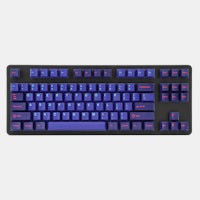
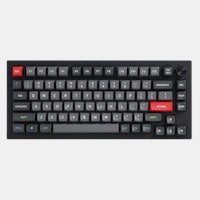
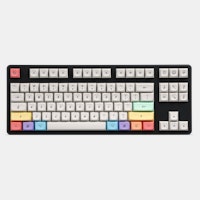
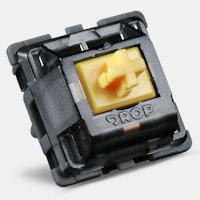

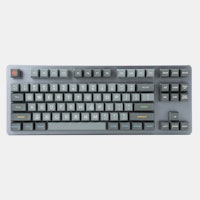

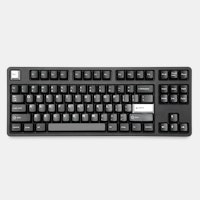






Low-Profile vs High-Profile
What Do “Low-Profile” and “High-Profile” Mean Low and high profile are referring to the keyboard case surrounding the switches and keycaps. If you’re coming from a standard rubber dome keyboard, you’ve almost certainly been using what would be considered a high-profile keyboard. High-profile case designs feature a top piece that has a height equal to the bottom of the keycaps. When keys are pressed, the keycaps will travel down below the case level. Low-profile on the left vs High-profile on the right:
Why Bother With Low-Profile If high-profile is the historical standard for keyboards, why even bother with low-profile designs? Simply put, low-profile case designs are easier, faster, and cheaper to prototype and produce than high-profile designs. This is particularly true for metal constructions. Low-profile metal cases can be laser cut from a stack of layered sheets of metal, with or without plastic diffusers sandwiched between. Some of my favorite keyboards in my personal collection were produced this way, in fact—extremely small production batches of custom boards made by acquaintances in the hobby.
Is High-Profile Better The obvious follow-up question then is to ask—is high-profile better than low-profile? Well, if weight is what you’re after, then high-profile is probably the way to go. More material in the case means high-profile designs are heavier. One more fairly minor consideration is durability. Since low-profile cases are a bit more exposed on the sides, transporting a low-profile keyboard in a backpack or bag is more likely to result in keycaps catching and putting sideways pressure on switches. If you’re not doing anything too crazy with your keyboard this shouldn’t be much of a concern. If you’re an RGB fan, a positive side to low-profile keyboards is a less obstructed view of per-key LED RGB. Especially if the board contains a south-facing style switch setup, which means the LEDs will shine towards the user, rather than away from, with a north-facing switch setup. At the end of the day, the main determining factor is probably going to be aesthetics. Some people prefer the “buttoned up” look of a high-profile case. Others like the exposed switches on a low-profile board. Which look matches your style?
Edit: Formatting